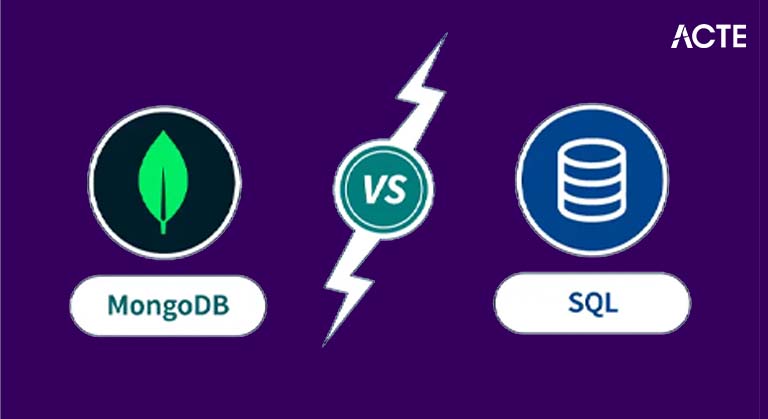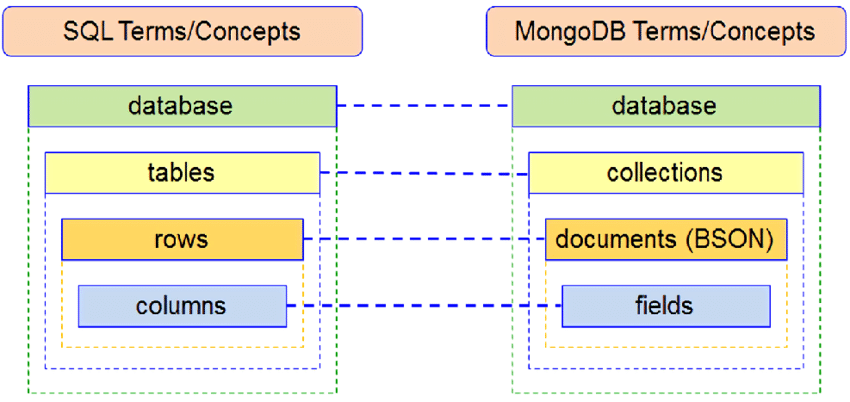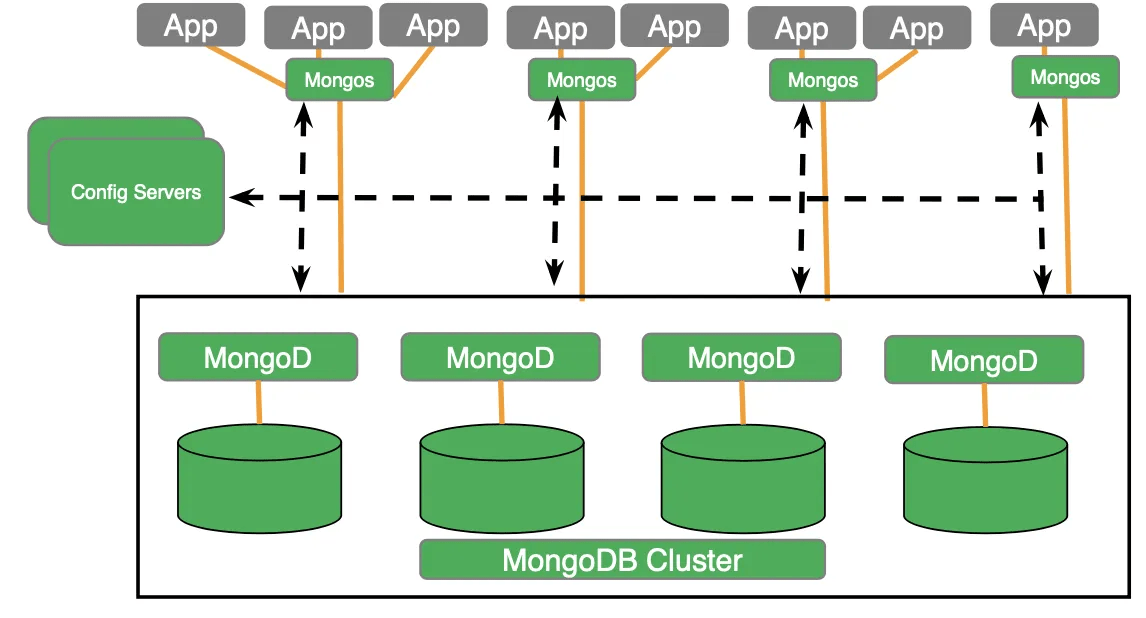
- Introduction to MongoDB and SQL
- Data Structure: Documents vs Tables
- Schema Design and Flexibility
- Query Language Comparison
- Indexing and Performance
- Transactions and ACID Compliance
- Scalability and Replication
- Use Case Comparison
Introduction to MongoDB and SQL
MongoDB and SQL are two popular database technologies, each with its unique features and use cases. MongoDB, a NoSQL database, is designed for handling unstructured data, offering flexibility with schema design and horizontal scalability. It’s ideal for modern applications that require fast processing of large amounts of data, such as big data or real-time analytics. SQL databases, like SQL Server, use a structured schema to organize data into tables with rows and columns, ensuring data integrity and enforcing relational rules. When comparing MongoDB vs SQL Server performance, MongoDB excels in handling high-throughput, large-scale data due to its ability to scale horizontally, while SQL Server performs better in complex queries and transactions where consistency is key. MongoDB’s database tools, like MongoDB Atlas and Compass, help manage, monitor, and optimize databases easily. MongoDB also supports a variety of data structures, such as documents, arrays, and embedded objects, making it a great choice for applications needing complex, hierarchical data, especially for those pursuing Database Developer Training. On the other hand, SQL databases focus more on relational data structures with predefined schemas. Both technologies require a solid understanding of data structures and algorithms for optimal performance, ensuring efficient storage, retrieval, and management of data in different types of applications.
Are You Interested in Learning More About Database Certification? Sign Up For Our Database Administration Fundamentals Online Training Today!
Data Structure: Documents vs Tables
- Flexibility: Documents, used in NoSQL databases like MongoDB, offer a flexible structure, where data is stored in a JSON-like format. This allows dynamic schema design and the ability to store different data types within the same collection. In contrast, Tables in SQL databases are rigid, requiring predefined columns and types, making SQL databases more structured but less adaptable.
- Schema Design: In SQL databases, the Database Schema Design is crucial as it dictates how data is organized across rows and columns. Tables must adhere to this schema, making them suitable for applications where data consistency and structure are paramount a key consideration when evaluating Firebase vs MongoDB Which To Choose.
- Query Language: When it comes to querying, SQL databases use Query Language (SQL) to interact with Tables, allowing complex joins and relationships. For Documents, a more flexible query language is often used, which can handle nested data structures without requiring complex joints.
Data structures play a critical role in organizing and storing data efficiently. When comparing Documents vs Tables, the key distinction lies in how the data is represented and structured.

- Performance: In terms of performance, Documents can offer faster read operations due to their hierarchical structure, eliminating the need for joins. SQL Server, however, may perform better with structured, relational data where ACID compliance and transactions are required.
- Data Storage: Documents can store more complex, nested data in a single unit, which is ideal for non-relational use cases. Tables, however, store data in rows and columns, making them better for structured, normalized datasets with strong relationships.
- Advanced Data Structures: Bloomfilter and other data structures can be applied to both Documents and Tables to enhance search and data retrieval. However, NoSQL databases often integrate advanced filtering techniques more seamlessly within their document-based systems compared to SQL Server, which relies on indexes and other relational techniques.
In summary, Documents vs Tables represent two different approaches to organizing data, each with its strengths and applications. SQL databases provide strong consistency, whereas Documents offer flexibility and scalability for dynamic data models.
Schema Design and Flexibility
Schema Design and Flexibility are crucial factors when choosing between NoSQL and SQL databases. In a traditional SQL Server, schema design is highly structured and must be defined upfront, with data organized into tables, rows, and columns. This rigid schema enforces consistency and ensures that data relationships are well-defined. However, this structure can make changes to the schema challenging, especially in large-scale systems. On the other hand, MongoDB offers greater flexibility with its dynamic schema design. In MongoDB, data is stored as documents (typically in JSON format), allowing each document to have a unique structure without the need for predefined schemas. This flexibility enables rapid application development and makes it easier to scale as data models evolve, especially when compared to the rigid structure defined by a Primary Key In SQL. When comparing MongoDB vs SQL Server performance, MongoDB generally outperforms SQL databases in handling large volumes of unstructured or semi-structured data, especially when it comes to scaling horizontally. MongoDB Database Tools, such as MongoDB Atlas, make it easier to manage and optimize these flexible data models. Moreover, data structures and algorithms play a key role in optimizing both types of databases. While SQL Server excels at complex queries and transactional integrity, MongoDB shines in handling high-throughput workloads where flexibility and scalability are more important.
Are You Interested in Learning More About Database Certification? Sign Up For Our Database Administration Fundamentals Online Training Today!
Query Language Comparison
- Language Type: SQL Server uses SQL (Structured Query Language), a standardized language designed for managing relational databases. It allows complex queries, including joins, subqueries, and groupings, essential for relational data. In contrast, MongoDB uses its own query language based on JSON-like syntax that allows for more flexible, document-based queries.
- Data Structure Interaction: SQL Server operates with structured data in tables, requiring a predefined schema and data types. On the other hand, MongoDB deals with semi-structured data stored in documents, allowing more flexible and complex nested queries with fewer restrictions on data format an important distinction to understand when you Compare HBase vs Cassandra Database.
- Joins and Relationships: SQL Server supports joins to relate data between tables, making it ideal for complex relational data. MongoDB, however, doesn’t use joins in the traditional sense but uses embedding and referencing to relate documents, offering faster reads in scenarios with complex, nested data.
- Performance: In terms of performance, MongoDB vs SQL Server differs greatly. MongoDB is designed to scale horizontally and is optimized for high-throughput, large-scale datasets. It can offer faster query execution in non-relational data scenarios, while SQL Server tends to excel in performance for transactional and relational queries that require strong consistency.
- Offline support requires good error handling to ensure no data loss. Firebase handles this by storing data locally, while MongoDB can require custom scripts to handle syncing in offline situations. Tool Compatibility:
- For developers working with JSON Formatter, these tools can help debug and format JSON data before and after syncing from offline storage. However, since BSON is a binary format, developers working with MongoDB Cloud need to convert it to JSON for easy inspection and debugging.
- ACID Compliance: SQL Server is fully ACID compliant, meaning it guarantees four key properties: Atomicity, Consistency, Isolation, and Durability. This ensures reliable, predictable transactions, especially for applications requiring strict data consistency. MongoDB, traditionally known for its NoSQL approach, supports ACID transactions in replica sets since version 4.0, but is not as stringent as SQL databases in enforcing these properties by default.
- Performance: When comparing MongoDB vs SQL Server performance, SQL Server tends to perform better in applications with complex, multi-step transactions that require strong consistency. MongoDB, however, may offer better performance for applications that prioritize scalability and speed over strict consistency, particularly in high-throughput, low-latency environments.
- Transaction Scope: In SQL Server, transactions can span multiple tables and queries within a single session, ensuring consistency across related data. MongoDB transactions, while supporting multi-document transactions, are typically more focused on individual collections, though newer versions have expanded this functionality knowledge that is essential when understanding What is Database Administration.
- Isolation Levels: SQL Server provides a variety of isolation levels (e.g., Read Uncommitted, Repeatable Read, Serializable) to control transaction concurrency and locking. MongoDB has simpler isolation, offering fewer options, but it is optimized for its horizontal scalability.
- MongoDB Database Tools: MongoDB Database Tools like MongoDB Atlas offer features that help ensure data consistency and integrity across distributed systems, but they may not provide the same level of transaction management as SQL Server in highly complex scenarios.
- Data Structures and Algorithms: Both systems benefit from efficient data structures and algorithms to optimize transactional performance. In SQL Server, relational structures such as B-trees and hash indexes are used to speed up transaction processing. MongoDB leverages similar structures like B-trees for indexes but is optimized for document-based data that may not require the same level of consistency across multiple entities.
When it comes to database query languages, both MongoDB and SQL Server offer powerful querying capabilities but differ significantly in their approach. Understanding how the two compare can help in selecting the best option based on the specific needs of your application.
-
Error Handling and Sync:
In summary, offline support is essential for maintaining app functionality in low-connectivity environments. While Firebase provides out-of-the-box solutions for offline storage and syncing, MongoDB Cloud requires more setup and use of tools like MongoDB Realm to manage offline scenarios effectively.
Indexing and Performance
Indexing and performance are essential aspects of database optimization, and both SQL databases and NoSQL systems like MongoDB use indexing to enhance query speed. In SQL Server, indexing is crucial for improving the performance of queries, especially when dealing with large datasets. SQL databases rely on structured Database Schema Design, where indexes are created on columns frequently queried, ensuring faster retrieval of relational data, which is essential knowledge in Database Administration Fundamentals Online Training. The Query Language used in SQL Server allows for complex queries that can take advantage of these indexes, reducing the need to scan entire tables. However, while traditional indexing is highly effective in relational models, it can become less efficient as the data grows, especially when dealing with complex joins. In contrast, NoSQL databases like MongoDB offer flexibility in indexing and can create indexes on documents’ fields, arrays, and embedded objects, optimizing performance for different data models. Additionally, more advanced techniques like the Bloomfilter can be applied to enhance query performance further by quickly eliminating non-matching data without needing to perform full scans. Both systems rely on intelligent indexing strategies to balance query speed and resource efficiency, with SQL Server focusing on relational integrity and MongoDB offering more adaptable indexing methods for unstructured data.

Transactions and ACID Compliance
Transactions and ACID compliance are crucial elements of database systems, ensuring data integrity and consistency during operations. Both MongoDB and SQL Server support transactions, but with different approaches. Here’s how they compare:
In conclusion, Transactions and ACID Compliance are implemented differently in MongoDB vs SQL Server performance, with SQL Server excelling in strong consistency for relational data, while MongoDB offers more flexibility and scalability for applications with less strict transactional requirements.
Scalability and Replication
Scalability and replication are crucial aspects of modern database systems, influencing how they handle growing data and ensure high availability. In SQL databases, like SQL Server, scalability typically involves vertical scaling, where a single server is upgraded with more resources to handle increased load. This can work well for smaller datasets and applications with relatively stable workloads, but it can become inefficient as data grows, especially without a proper understanding of the Types Of SQL Indexes. On the other hand, SQL Server supports replication techniques such as snapshot, transactional, and merge replication to improve availability and ensure data consistency across multiple servers. While this approach works effectively for relational data, it is more complex to manage in larger environments. In contrast, MongoDB is designed with horizontal scalability in mind, offering sharding to distribute data across multiple servers, making it more adaptable to large-scale applications. Replication in MongoDB is built in, with replica sets providing high availability and fault tolerance. MongoDB Database Tools, like MongoDB Atlas, simplify the process of setting up and managing replication. When comparing MongoDB vs SQL Server performance, MongoDB often outperforms SQL databases in scalability, particularly in applications with large volumes of unstructured or semi-structured data. Additionally, techniques like the Bloomfilter can be applied to optimize query performance in distributed systems, helping MongoDB maintain fast data retrieval even at scale.
Are You Preparing for Database Developer Jobs? Check Out ACTE’s DBMS Interview Questions and Answers to Boost Your Preparation!
Use Case Comparison
When comparing use cases for SQL databases like SQL Server and NoSQL databases like MongoDB, the choice depends largely on data structure, scalability, and application requirements. SQL Server, with its rigid Database Schema Design and use of Query Language (SQL), excels in applications where data relationships are complex and consistency is crucial. This makes it ideal for transactional systems, financial applications, and customer relationship management (CRM) systems, where data integrity and relational consistency are essential. The strong ACID compliance in SQL databases ensures that these applications can rely on robust, structured data management, making them ideal for those undertaking Database Administration Fundamentals Online Training. On the other hand, MongoDB is better suited for applications requiring high flexibility and scalability, such as content management systems, real-time analytics, and IoT platforms. Its ability to handle unstructured or semi-structured data, combined with horizontal scalability through sharding, makes it ideal for big data applications. When comparing MongoDB vs SQL Server performance, MongoDB shines in high-throughput environments where the ability to scale quickly and handle diverse data types is critical. Furthermore, advanced techniques like the Bloomfilter in MongoDB can optimize search performance in large-scale distributed systems. Ultimately, the choice depends on whether the application needs the structured consistency of SQL Server or the flexible, scalable nature of MongoDB.


